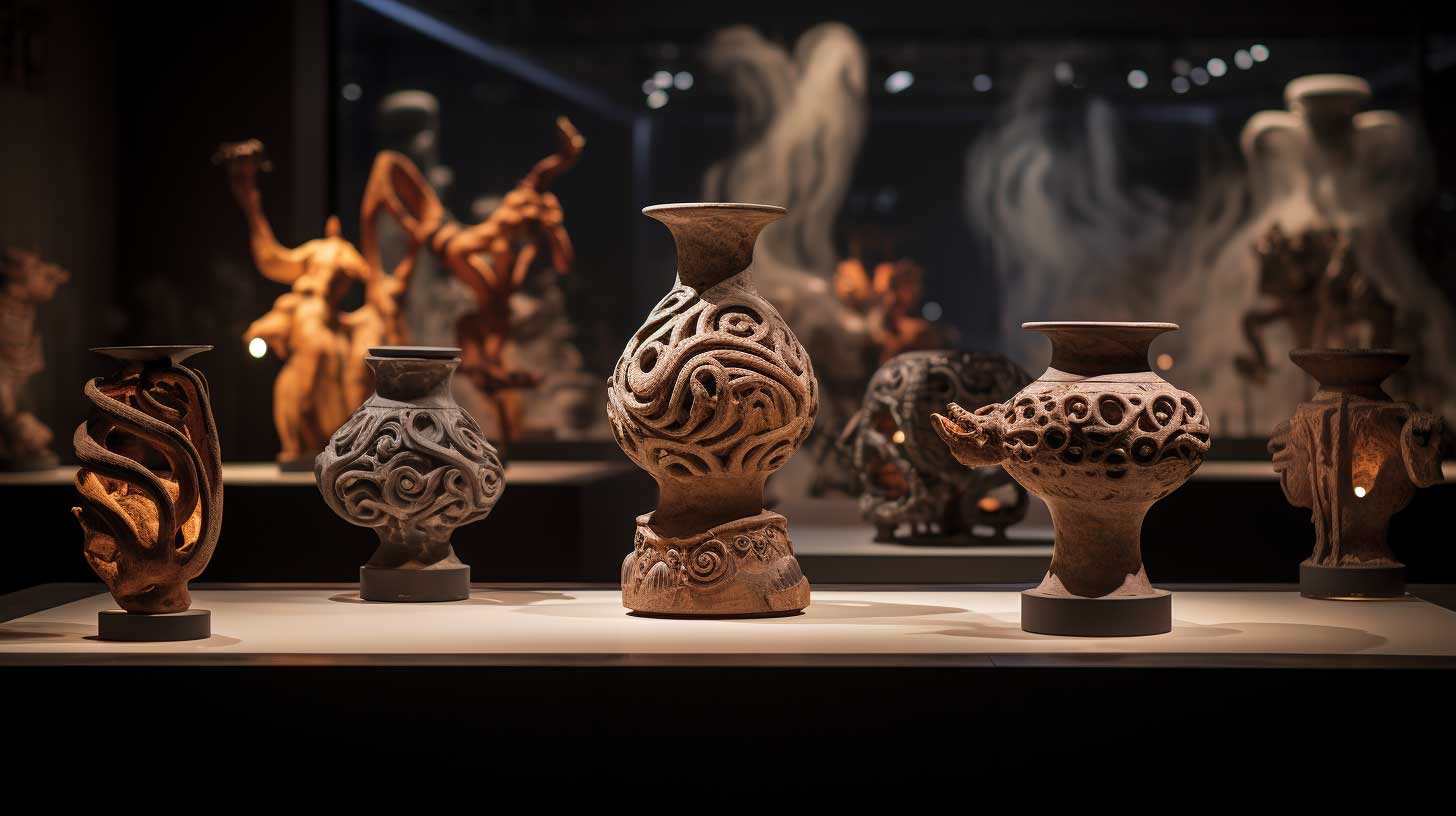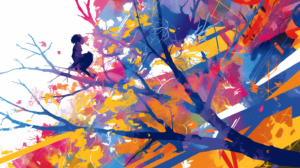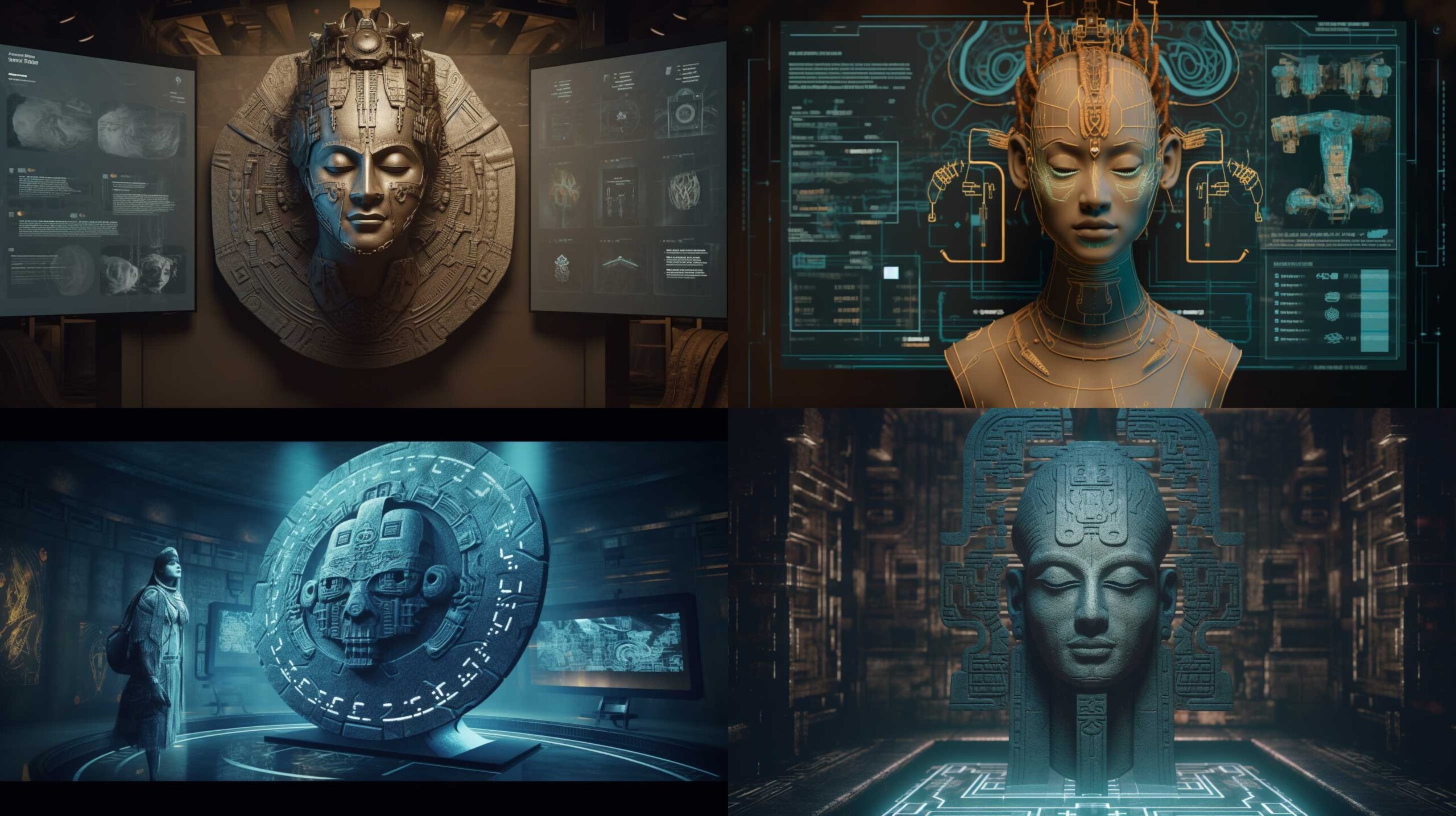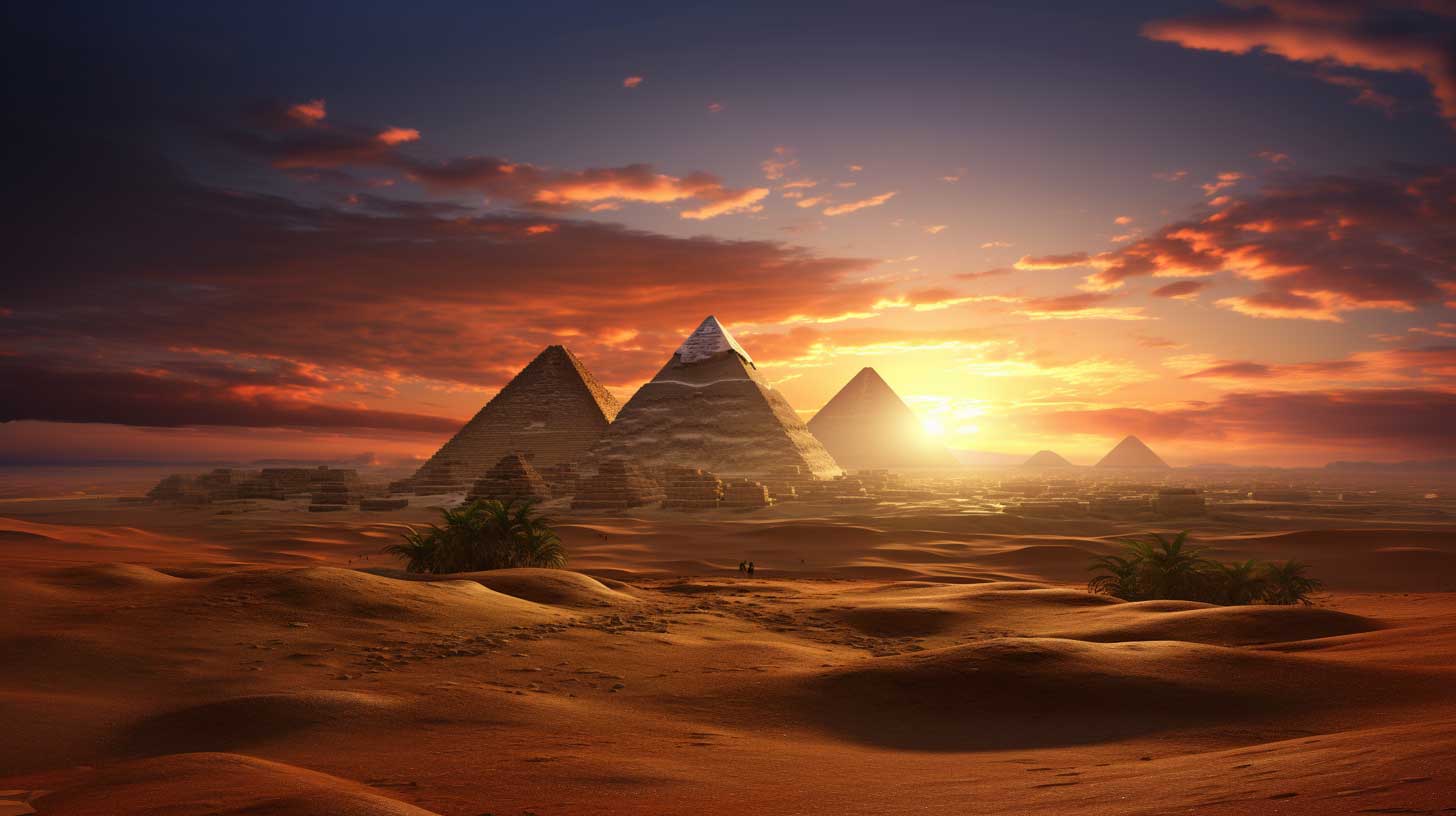AIが過去を描くことは可能でしょうか?私はこの問いに答えるため、画像生成AIのMidjourneyを使って実験的な試みを行ないました。ターゲットは何といっても、日本の考古学で最も象徴的な遺物と言っても良い(?)、”縄文土器”です。発掘調査報告書の遺物の事実記載をプロンプトとして、Midjourneyに土器を視覚化させます。AIがどの程度、縄文土器を正確に再現できるのか、そしてこの試みが我々の考古学的言説にどのような影響を与えるのか楽しみですね。
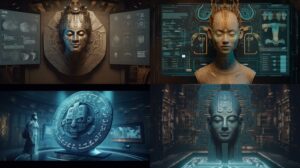
縄文土器:生成実験1:用語ベース編
まずは、画像生成系AIの中でも最近話題のMidjourneyのお手並み拝見!?今回の生成実験のテーマ”縄文土器”を基本的な用語ベースでプロンプトにしていきます。
/Jomon pottery --q 2
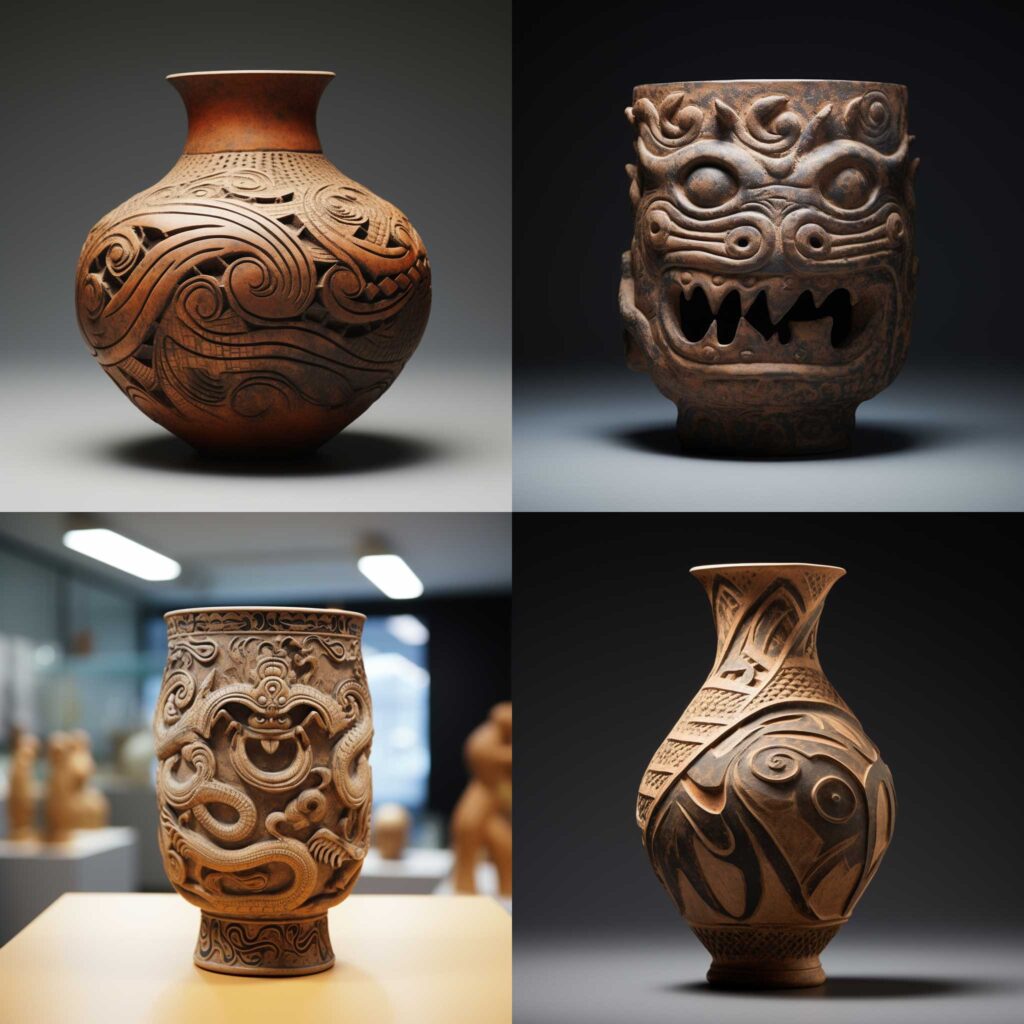
/Jomon pottery --q 5
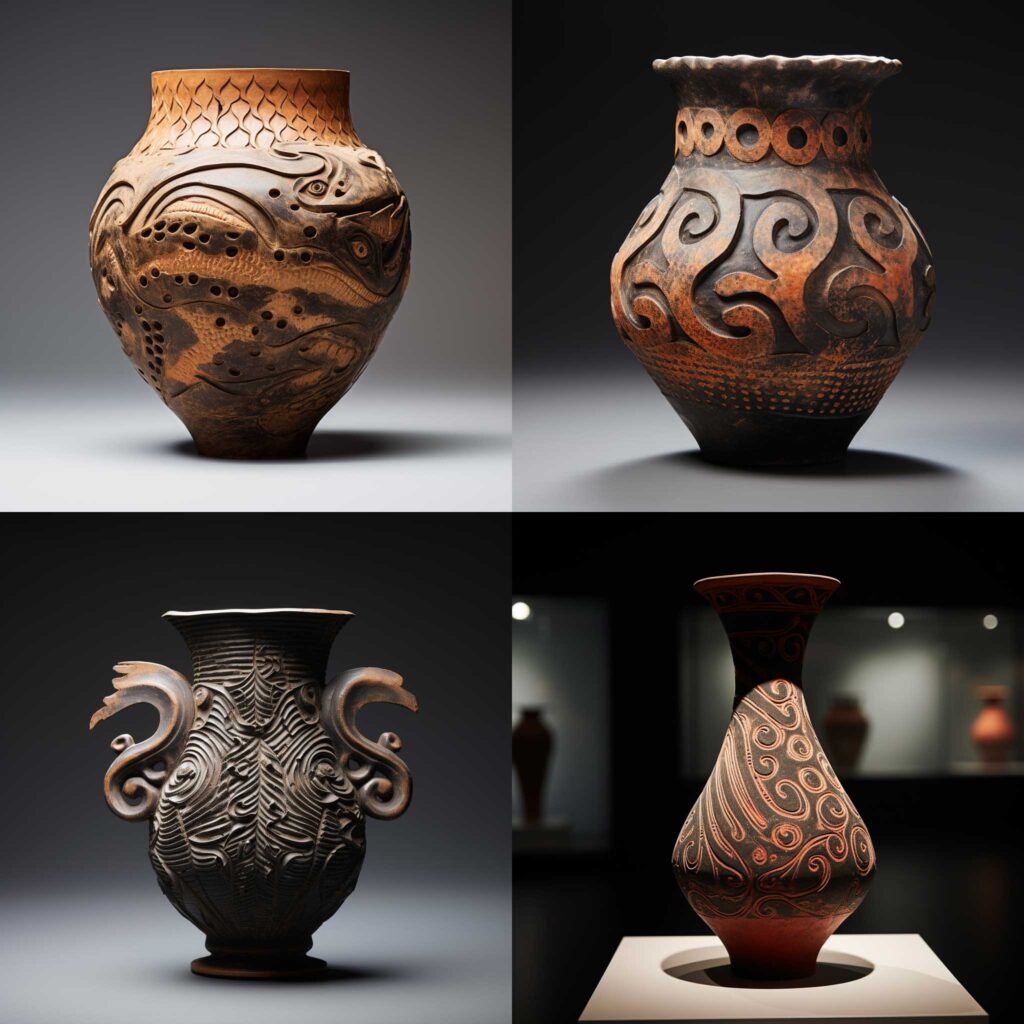
レンダリングの品質(quality)を変更して、2枚出力しました(fig1,fig2)。いずれも文様が縄文ではなく、異国要素がかなり強いですね・・・かろうじて渦巻文的要素が少し見えなくもないですが。この時点でなんとなくわかりますが、Midjourneyは学習データに本物の縄文土器的なデータを食べていなくて、「Jomon」がピンときてないようですね。一応、「Jomon pottery」ではなく「Jomon ware」も試してみます。
/Jomon ware --q 2
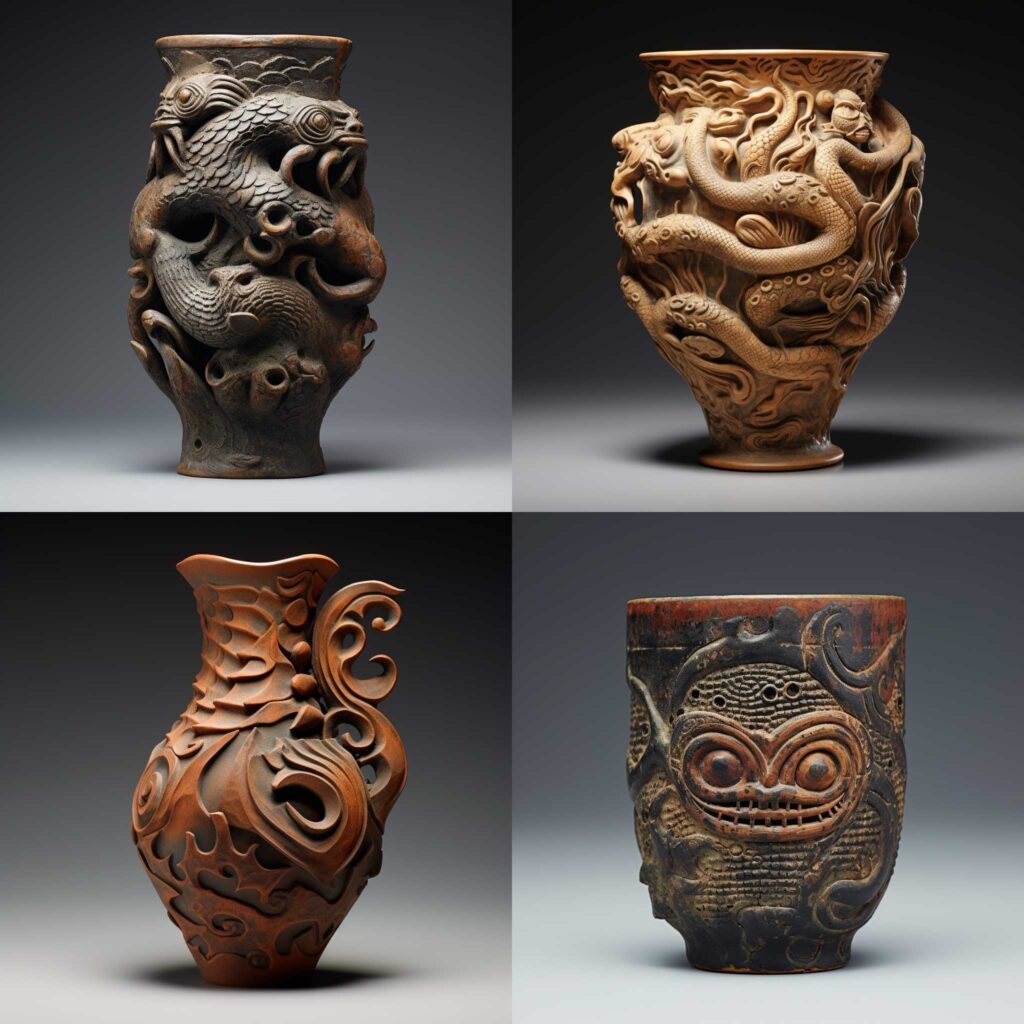
/Jomon ware --q 5
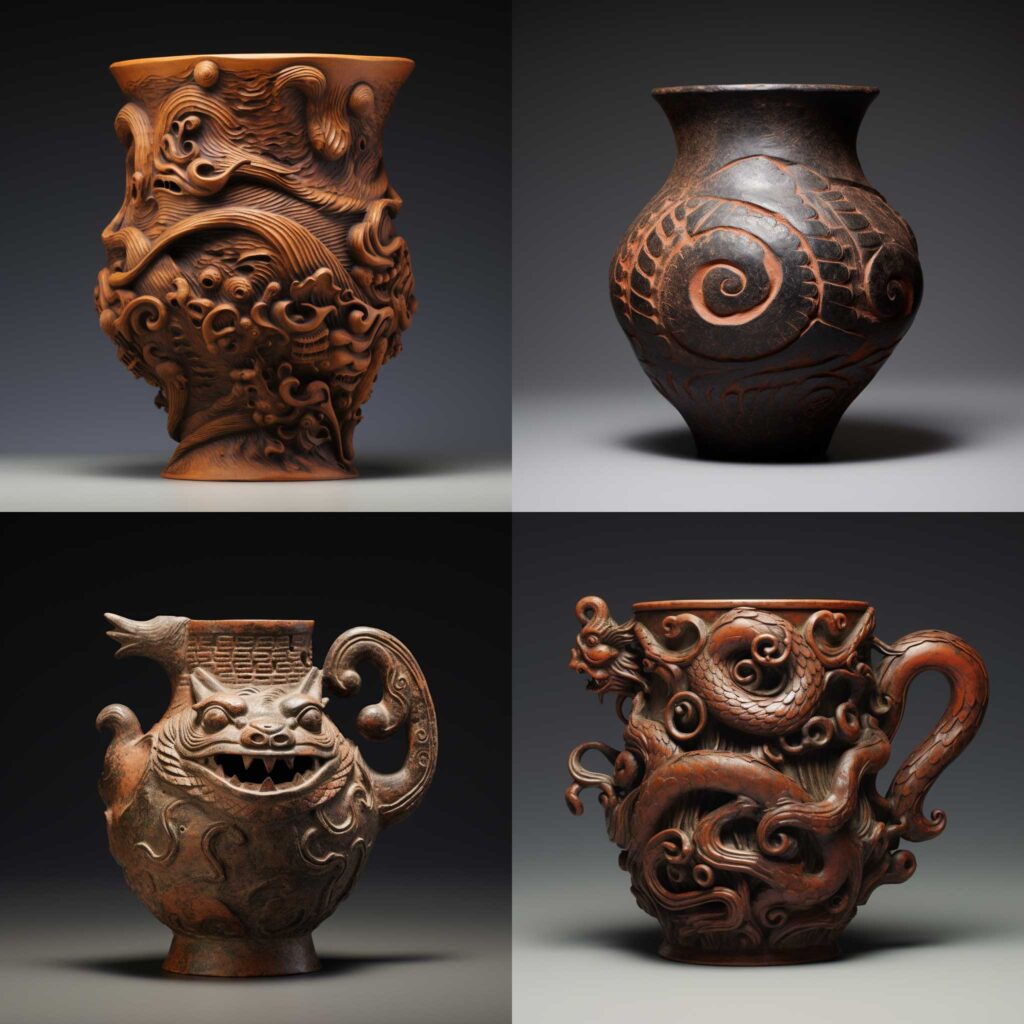
いや、これはこれでかっこいいけど。。。縄文土器かって言われると、NOですね。あえていうならfig4の右上(U2)が、遠目にみればちょっと近いかくらい・・・そんなのありそうでないか。よくよく見ると、意外に行けるんじゃないか、とか思っちゃいますね笑。最後にちょっと、欲張って「縄文時代の土器」に挑戦してみます。
/Jomon Period pottery --q 2
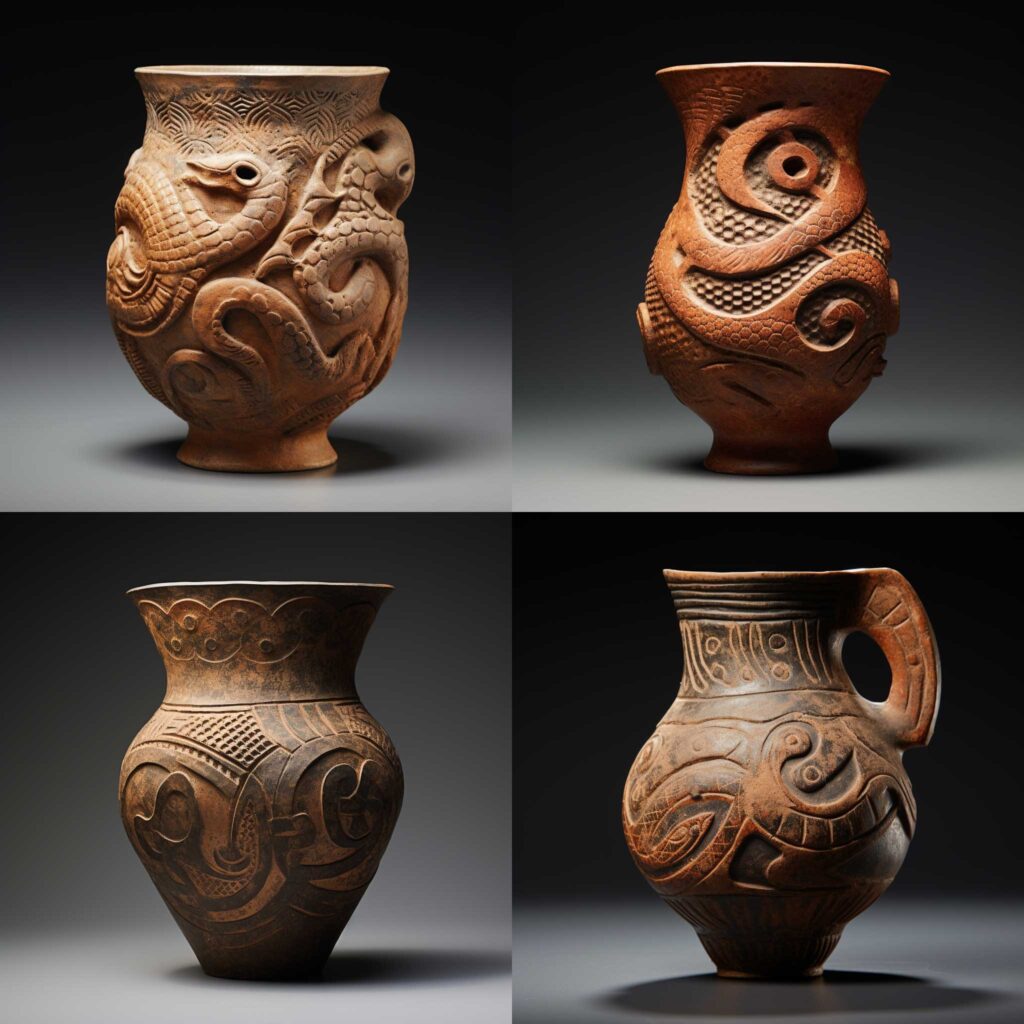
/Jomon Period pottery --q 5
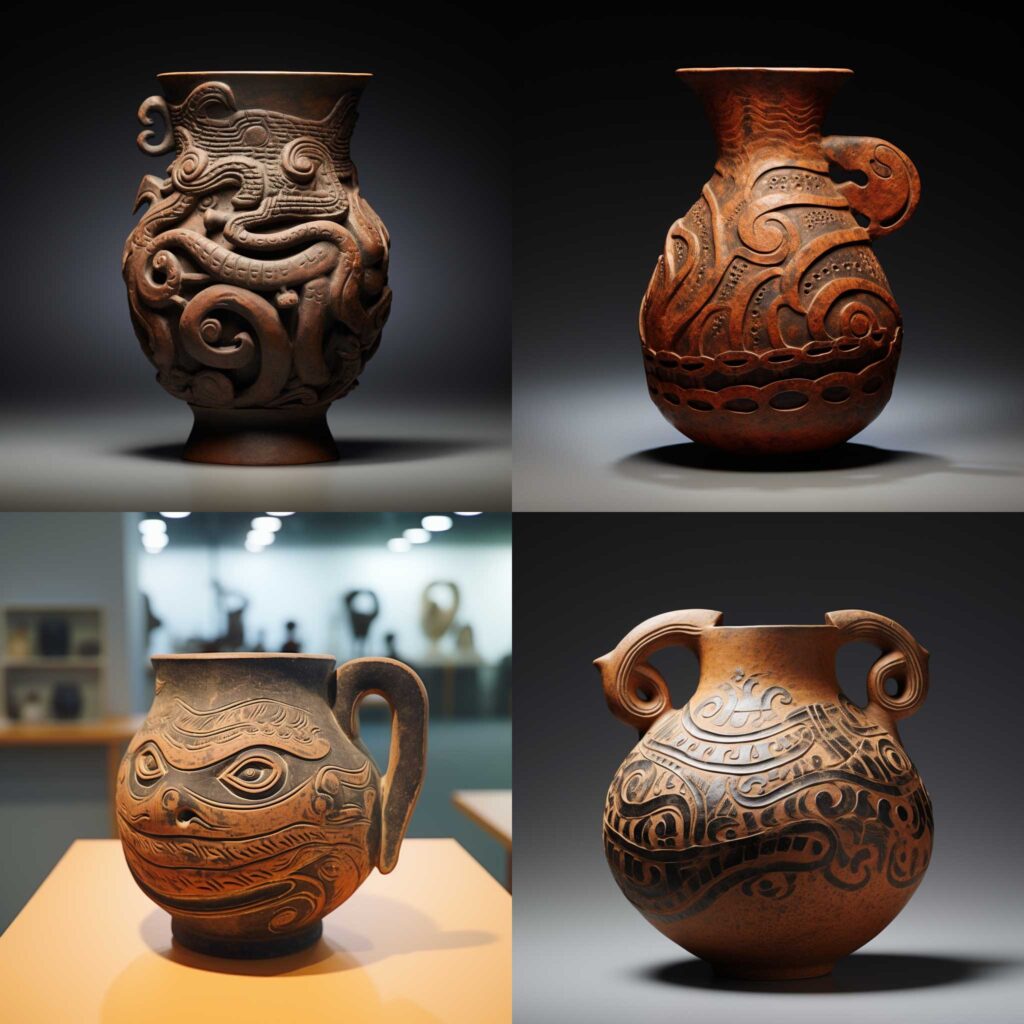
あまり変わりありませんね。それにしても、Midjourneyくんは、⚫︎⚫︎文明的な文様構成と器形、それに妙な把手と龍っぽいの好きですね。相当食べてますよ、マヤとか中国。
縄文土器:生成実験2:説明ベース編
Midjourneyは用語ベースでは”縄文土器”を認識できていないようなので、詳細な説明をプロンプトに加え、縄文土器がどのようなものなのか丁寧に教えてみたいとおもいます。。
/Pottery with Jomon Period rope pattern in Japan. --q 5
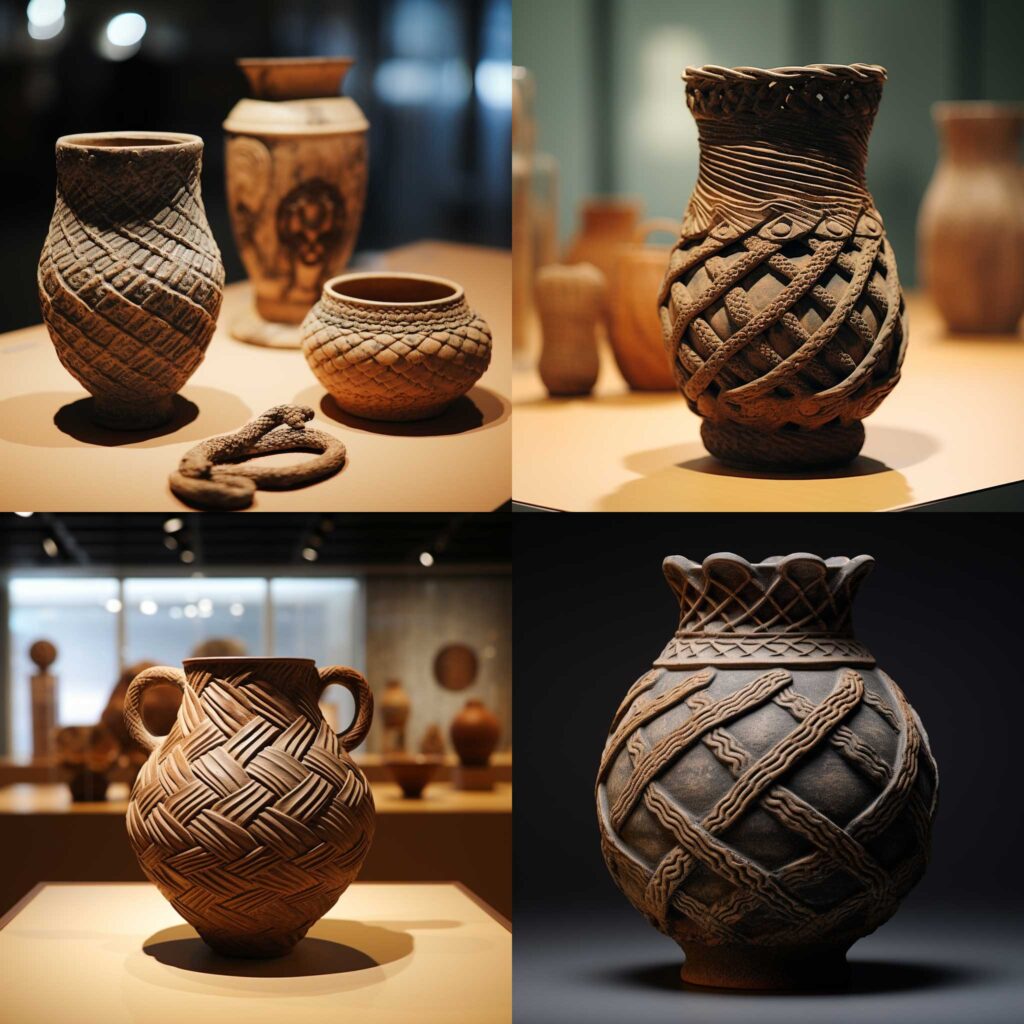
/straw rope-patterned ancient Japanese pottery. --q 5
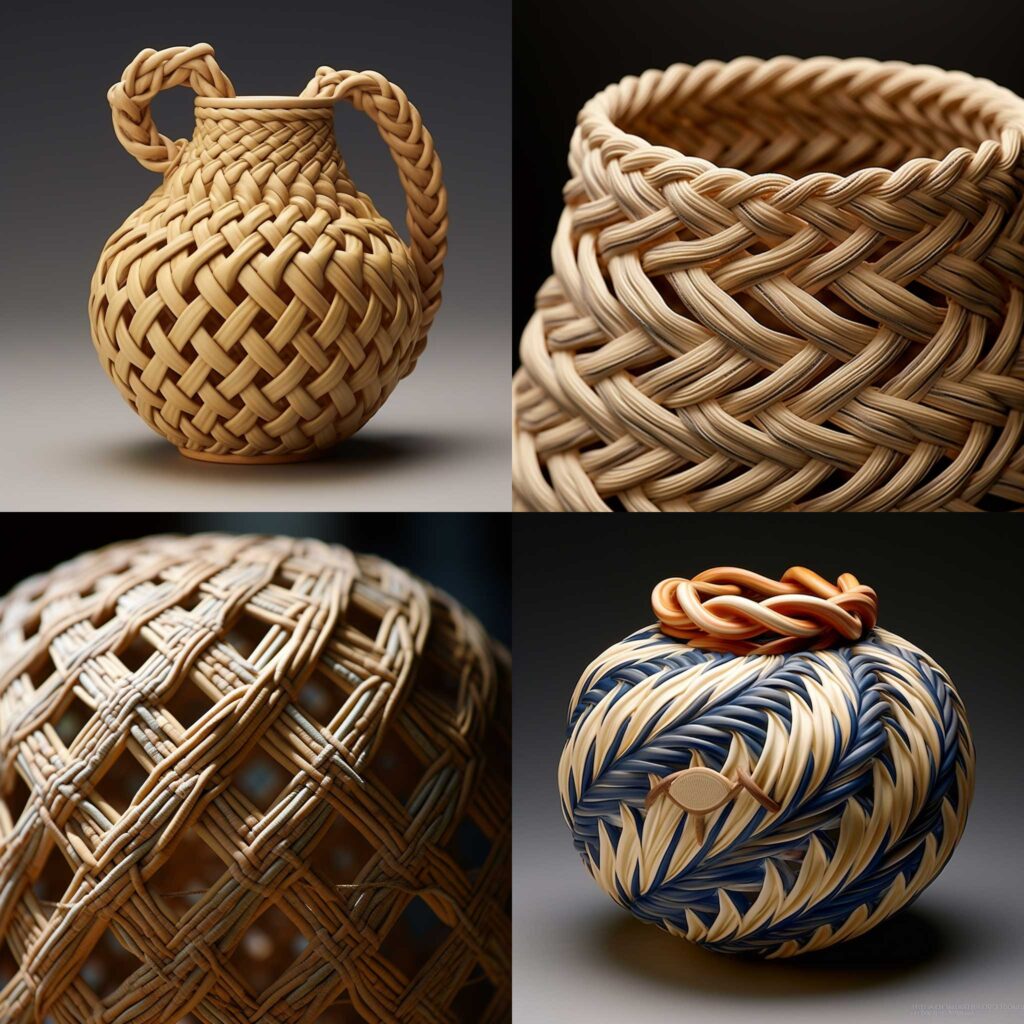
縄の認識が斬新で言葉が出ないですね。fig8は編組製品になってきました。さらに一気にペースを上げてみたいとおもいます。
/Jomon Pottery from ancient Japan, distinctive for its cord-marked patterns created by pressing twisted cords into the surface of the clay while it's still soft. The pot should be round-bottomed, reminiscent of gourd or beaker shapes, often with flared rims, reflecting the hand-built, coil technique used in its creation. --q 5
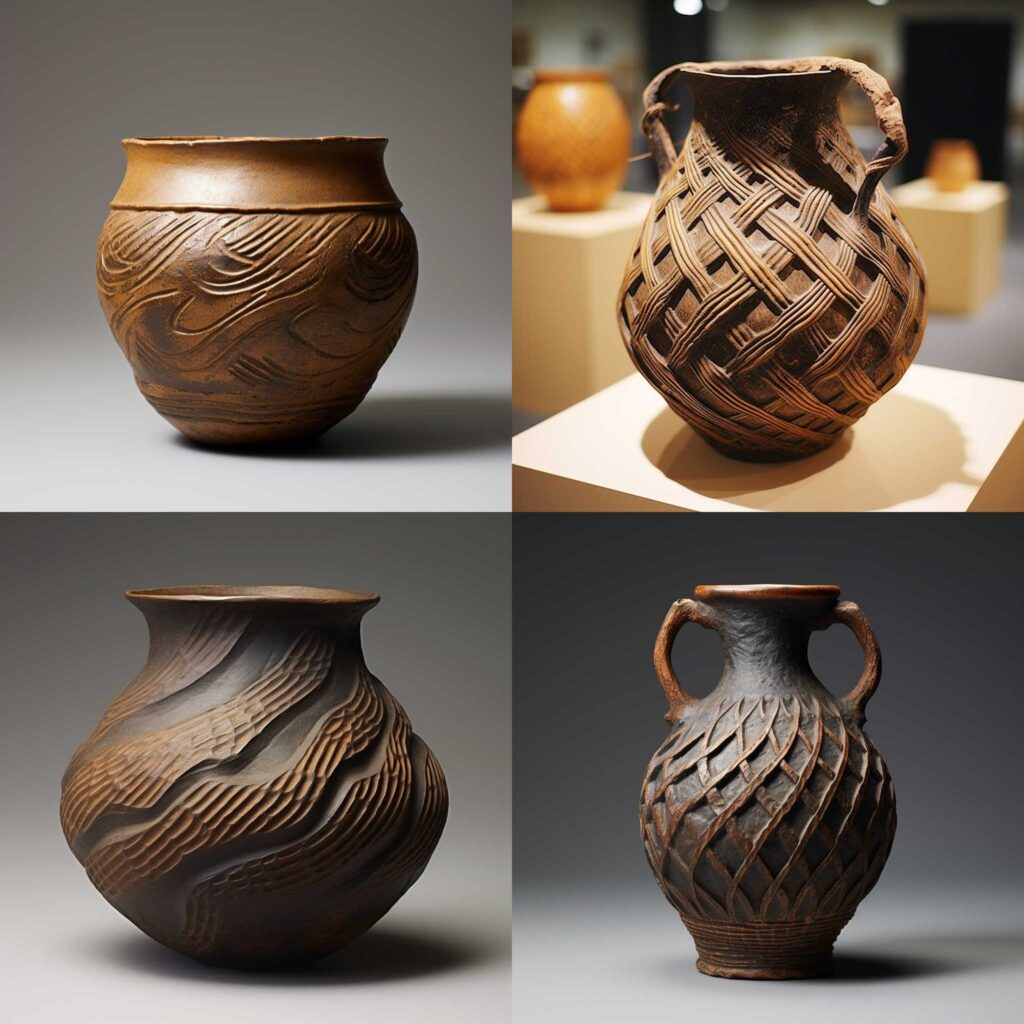
/Jomon Earthenware. Jomon earthenware is a style of pottery produced during the Jomon period in ancient Japan characterized by rolled rope patterns, intricate patterns, and often highly decorative shapes. --q 5
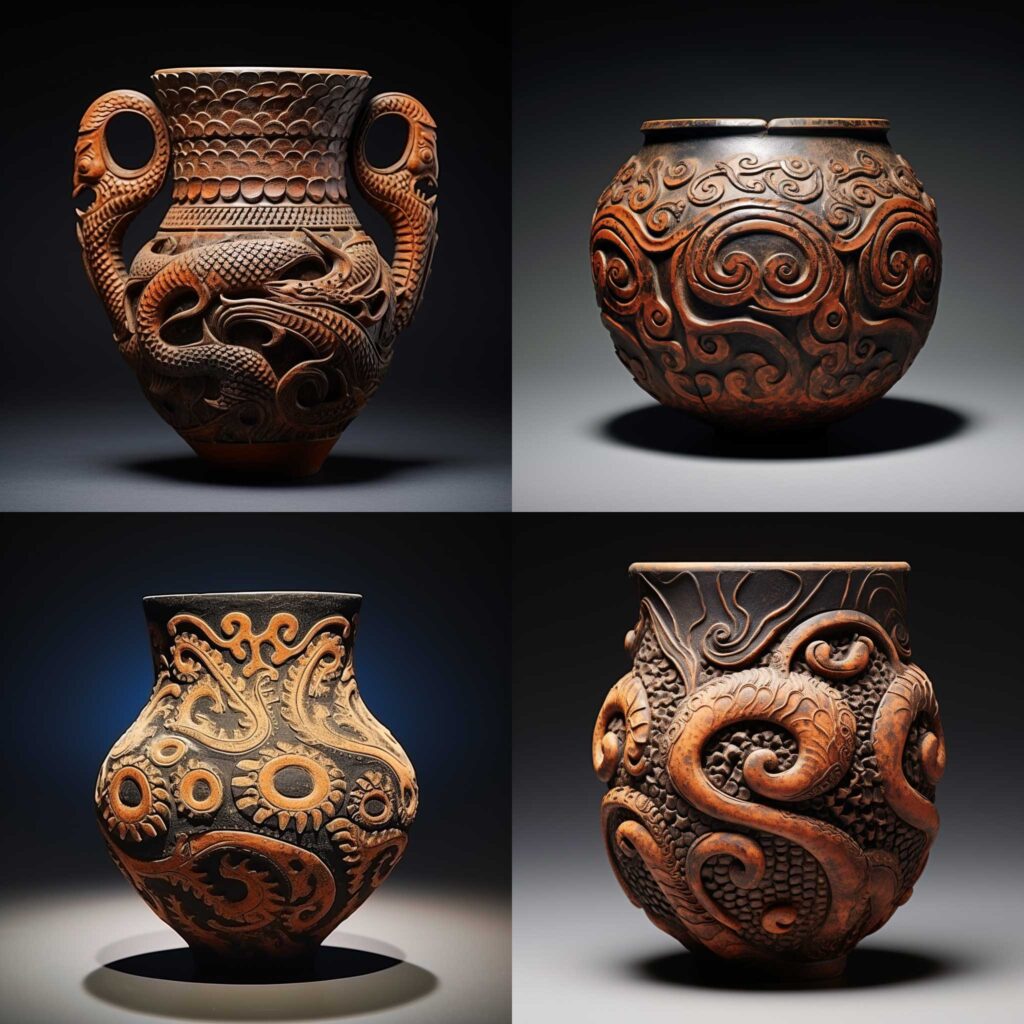
/Jomon period pottery artifact from ancient Japan, a vessel that is bulbous and round-bottomed, hand-built using the coil technique, resulting in a layered, coil-like appearance. The surface should be adorned with intricate patterns produced by impressing twisted cord onto the wet clay. The vessel is likely to have a flared rim, and may include additional decorative elements such as human or animal figures attached to the rim or body. The overall aesthetic should evoke a sense of rustic sophistication, reflecting the rich cultural history of the Jomon period. --q 5
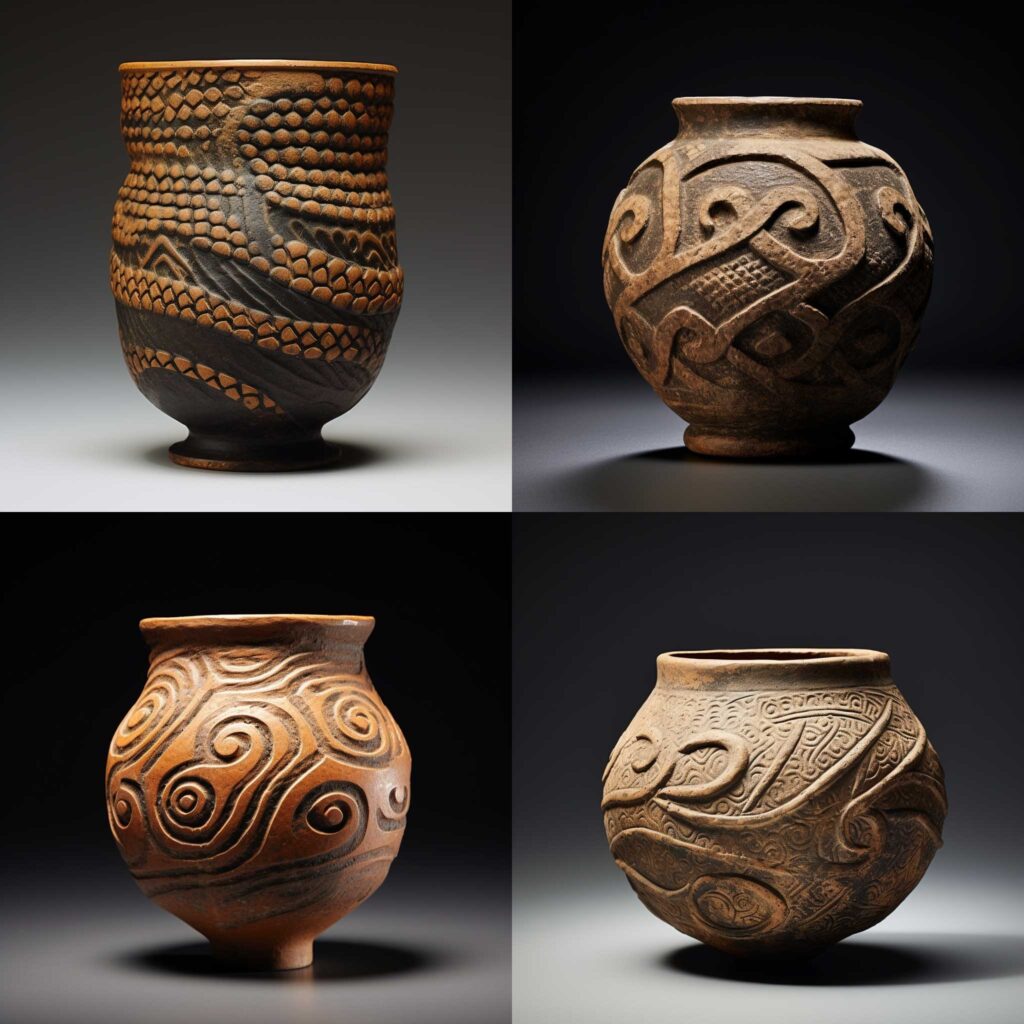
課題と展望
この縄文土器生成の実験から得られた課題は多く、特にAIという新たな技術を既存の研究フィールドに応用する際の課題と可能性について深く考えさせられました。
まず、直面した一つの大きな課題として、AIの「専門知識の欠如」が挙げられます。そりゃそうなのでしょうが。Midjourneyのような画像生成AIは、入力されたプロンプトから画像を生成することが可能ですが、その背後にある専門的な知識や理解を持っていません。これらのAIは、エンコーダーでテキストを特徴量に変換して、CLIP誘導方式の拡散モデルを利用することで、その特徴量からテキストの指示に従った画像を生成するという、ある種の拡散モデルベースの方法を採用しています。
私たちの場合、このAIを縄文土器という特定の考古学的領域に適用しようとしたところ、その高度な専門性と多様性が障壁となりました。縄文土器は細別時期や地域によってその形状や文様が大きく異なるため、一般的なプロンプトでは抽象的すぎてAIが適切な画像を生成することは困難でした。
これを解決するための一つの方策として、AIが画像を生成するためのプロンプトを設定する際に、より専門的知識を積極的に取り入れることが挙げられます。この縄文土器で言えば、どの時期の何形式でどのような文様を持ったどういう形の土器なのか、詳細かつ具体的なプロンプトを設定することで、AIは期待する結果に近い画像を生成する可能性があります。しかし、これには考古学者の深い理解と時間を必要とします。あまり細かい考古学用語の日英対照表は一般的にないですもんね、たぶん。
一方で、AIと協力することで、未来の考古学的研究が進展する可能性があります。考古学を専門とする者が持つ深い専門的で高度な知識とAIの画像生成能力を組み合わせることで、新たな視点や解釈が生まれるかもしれません。また、遺物の視覚的再現は教育や広報活動においても有用であり、考古学への理解を深める新たな手段となり得ます。
さらに、AIの技術自体も日々進化しており、より複雑なタスクをこなす能力を持つものも現れています。その中には、特定の分野の知識を持つAIや、人間の専門家と協力して作業を進めるAIも含まれています。
この実験から得られた洞察を基に、我々はAIと考古学という異なるフィールドの融合を進めるためのさらなる研究を進めていきます。この分野がどのように進化していくのか、そして我々がどのようにそれを活用していくのか、これからがとても楽しみです。
